Provence style dishes: interesting options and features of choice

Provencal interior style has not competed with anything for a long time: it does not need advertising, it is a self-sufficient and established style, the number of fans of which is not decreasing. Provence (or French country) is not about common, recognizable features, it is about the thoughtfulness of every detail, the emphasis on the little things that create the image of a cozy, warm home. And dishes in the Provence style (including wall plates) are an obligatory style-forming attribute.

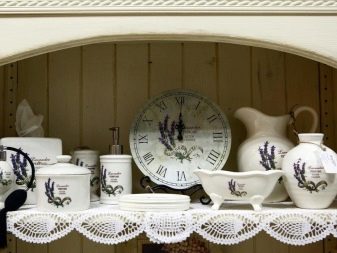
Colors and shades
The style itself is kept in soft shades, sometimes it seems that they are diluted with milk, sometimes - that they are covered with a morning misty haze. This applies to walls, floors, textiles, furniture colors. And this also applies to kitchen utensils.
Typical shades:
- delicate pink and faded blue;
- lavender (accent shade in Provencal style);
- mint;
- lactic;
- delicate shades of brown and gray;
- beige tones.
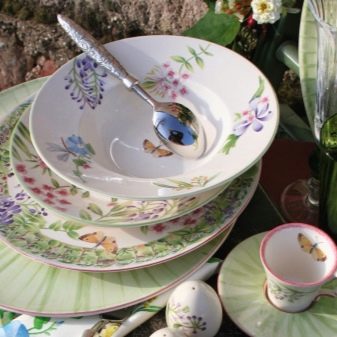
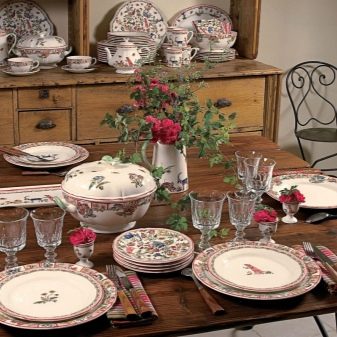
Interspersed with terracotta and blue are less common, but they are characteristic of Provence, although it is very important not to overdo it with them.
More than three colors in the interior can be used, but carefully and with a clear arrangement of accents. The same is with the dishes: the general background is one or two, but the details can be multi-colored, but should not dazzle.
Lightness and tenderness, floral motifs - all this also applies to tableware. If a tea set is, for example, bright red, it stands out from the general pastel range. In the Provencal style, everything is muted, warm, without deliberate brightness.
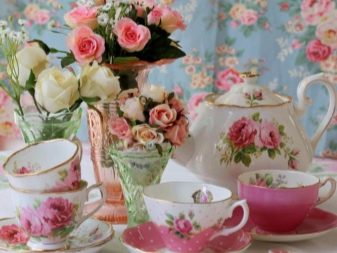
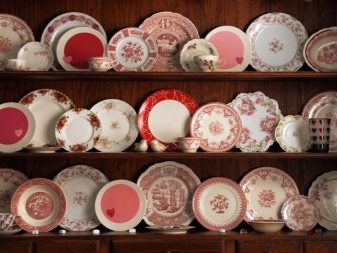
Materials (edit)
There are several options, and they can all be combined in one kitchen: porcelain, ceramics, wood. The basic principle of Provencal tableware is natural materials, classic shapes, pastel shades and discreet patterns.The ceremonial table service can be made of porcelain: it is served at the table on special occasions, the rest of the time it decorates the "exposition" of the buffet.
On weekdays, ceramics and partly wood are used. Ceramics involves the use of not only cups and plates: saucers and vases for jam, pots for hot dishes, cocotte and fruit bowls, wicker baskets - in Provencal aesthetics there is a place for little culinary assistants.
They decorate everyday life, make food intake more beautiful, ritual, and whet the appetite.
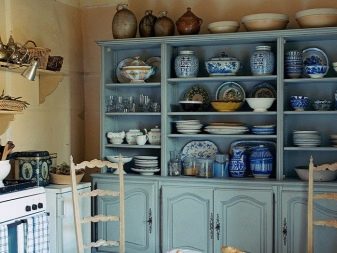
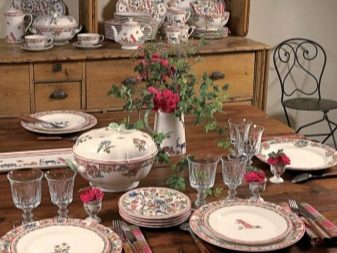
Plastic is not about Provence. Even for the so-called rough household needs, try not to use plastic bowls - it is better to stock up on enamel bowls, cans, and mugs. They can be quite decorative, but at the same time they will not look like a product of an era alien to the Provencal style.
After all, French country music is dedicated to the aesthetics of the time when televisions were rare, there could not be plastic bags and plastic bowls in everyday life, and “herbal” pots from Ikea replaced vases with real wildflowers.
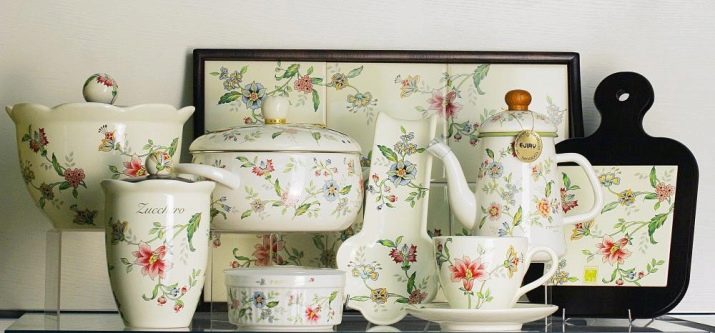
Motives
Many sets of dishes fit perfectly into the Provencal style in color and shape, but doubts arise about the motives. If you are perfectionist in the selection of dishes, you will have to take this point into account.
What motives on the table tea set echo the Provencal style:
- flowers (field and garden);
- fruits (especially bunches of grapes);
- lavender fields (and in general everything related to lavender - the symbol of Provence);
- patterns with curls and waves;
- home birds;
- leaves of various plants;
- wine (in glasses and bottles);
- prints repeating imprints of postage stamps.

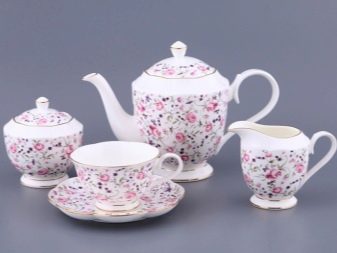
Of course, bouquets will be the main motive. But flowers must be strictly field or garden flowers. The landscapes of the province of Provence can also decorate tableware.

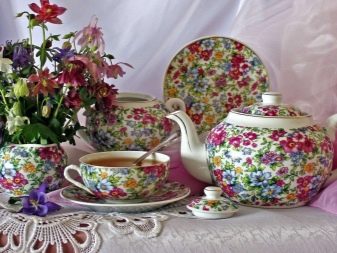
But if, in principle, you do not really like ceramics or porcelain with a pattern, there are also more concise options. For example, the edge of a cup or saucer is framed by a not very wide stripe of color. Also, along the perimeter of the dish, the author can draw a light wave. The dishes can be completely white, without any shade, but with an interesting texture.
Serving subtleties
Provence style is difficult to blame for the lack of democracy. There are no strict requirements for what the service should be, for how many people it will be, what tureens should have handles. It's all up to the owner most importantly, no chopped strict geometric shapes.
Pleasant roundness of the dishes, twisted handles, interesting textures and embossing - this is what plays along with Provence.
How to set the table for a dinner party.
- Tablecloth. Standard solid white is also acceptable. If the celebration is special, and you want to emphasize this, then the option with a white tablecloth is priority. But if you want comfort and pleasant communication with loved ones, and not underlined solemnity, stop at a checkered tablecloth or with a small floral print. Again - dim. If the dishes are white, a checkered linen tablecloth (lavender or mint-colored cage) is ideal.
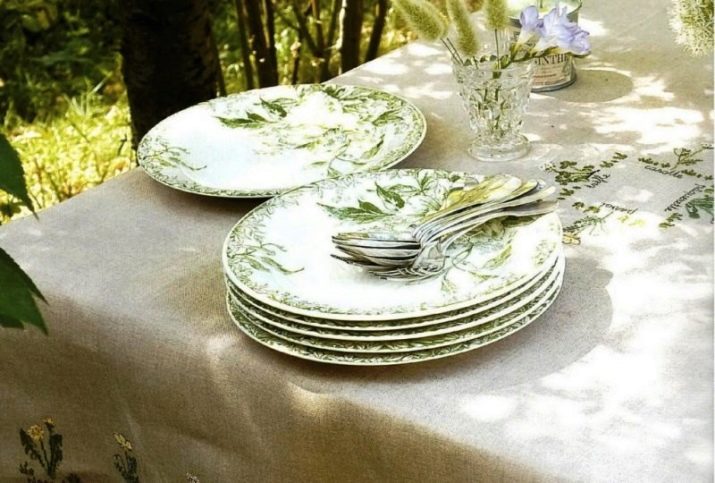
- Separate your main meal and tea. There should not be a lot of dishes on the table - just refrain from an abundance of salads and snacks. Choose the main course that you invite guests to - for example, chicken with apples. And then place it in a beautiful, wide enough dish, which will be in the center of the table. If you want to precede it with the first (soup), first serve a tureen with graceful handles, where there will be a light vegetable or chicken broth (possibly with croutons).
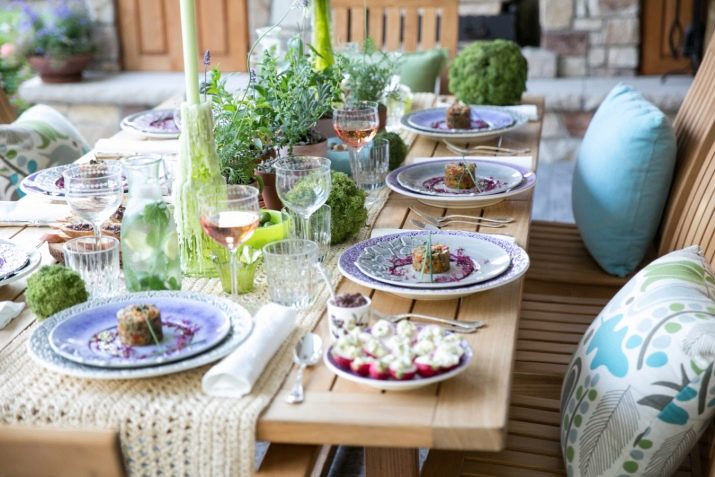
- The rest of the saucers and vases contain additions to the main course, vegetables and sauces. It's not worth making a side dish heavy for the stomach for the same chicken, it distracts and deprives the dinner of balance. Again, remember: the main course is one, which means that the plate in which you serve it should not compete with the main dish on the table.She sets it off, serves as a complement, not a competitor.

- Glasses for cold non-alcoholic drinks can be colored - mint and lavender tones are the priority. Embossed glasses are ideal. Glasses for alcohol - on beautiful legs, also not necessarily transparent.

- Forks and spoons... Options with a wooden base are appropriate. It is desirable that the base does not "argue" with the rest of the dishes in terms of color and design.
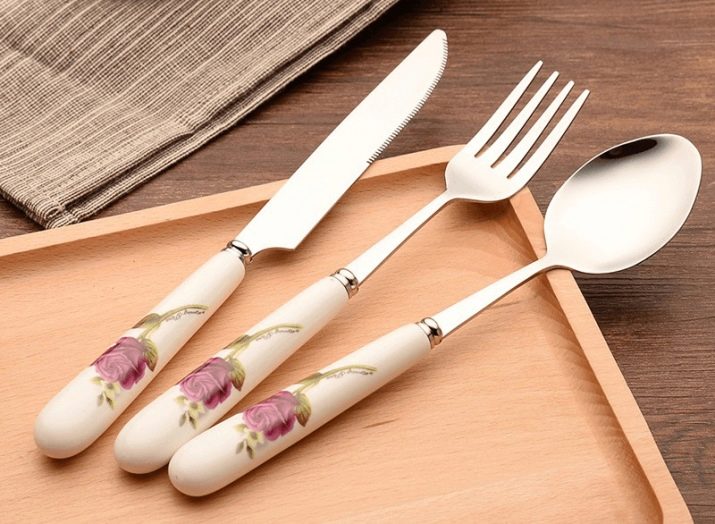
- Supplements. If you serve butter, it should be in a neat butter can. If you need granulated sugar, keep a nice sugar bowl for these occasions. Desserts are served on beautiful footed stands, accompanied by graceful shoulder blades with some recognizable Provencal print.
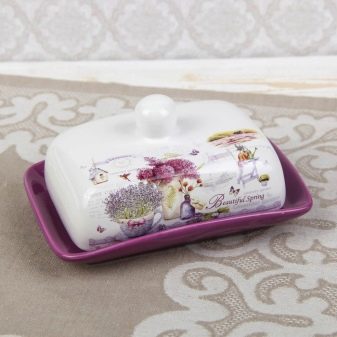
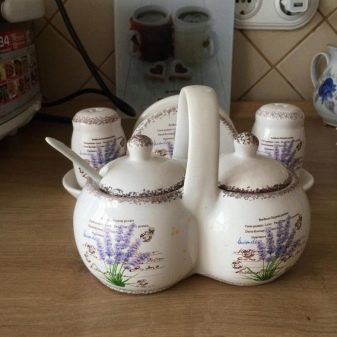
- Accessories. Decorate your table with a vase of flowers, whether it's a lush bouquet of wildflowers or freshly cut garden roses. Put Provencal-style textile napkins on the plates, they can be tied with lace ribbons and decorated with the same garden roses, lavender, even simple daisies (put under the ribbon). For intimacy and to create a soulful atmosphere on the table, candles are needed - in safe candlesticks. Salt shakers can be selected in the form of birds or chickens.
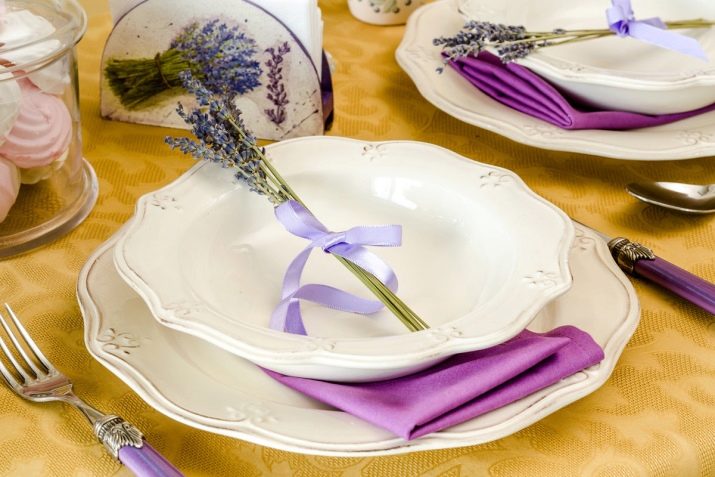
Wide flat plates with Provencal motifs can be placed on the wall as decor. They will be like original paintings with Provencal landscapes, lavender bouquets, birds in cages, grapes and juicy fruits. There can be a lot of plates, place them harmoniously, avoiding straight lines. Remember that small prints are Provence, large roses are from “another opera”.
Also pay attention to the dishes that will be on the table all the time: a fruit bowl, a bowl for cookies and sweets, a decanter for water or compote. They should be consonant with each other in design, material.
I would like to draw your attention to one important rule: when you create a certain style in your home, do not show how hard you try. Simply put, any obsession with perfect compatibility, the fear of introducing the slightest alien element into the interior, the emphasis only on brand attributes make the environment artificial, inanimate.

In the Provencal style, its naturalness, simplicity, a call to vitality, the value of tradition and the absence of bombast are valuable. And in the dishes too.
For an overview of Provence style dishes, see the next video.








